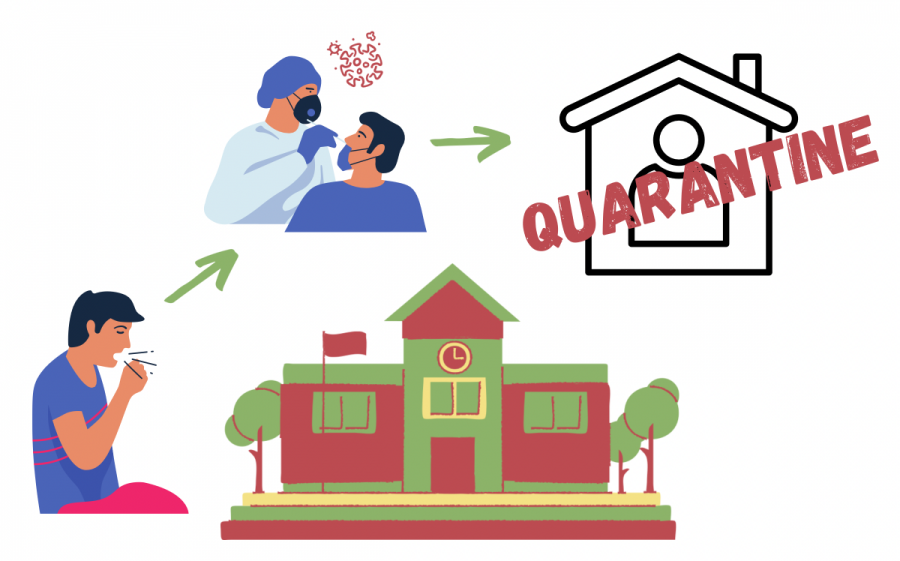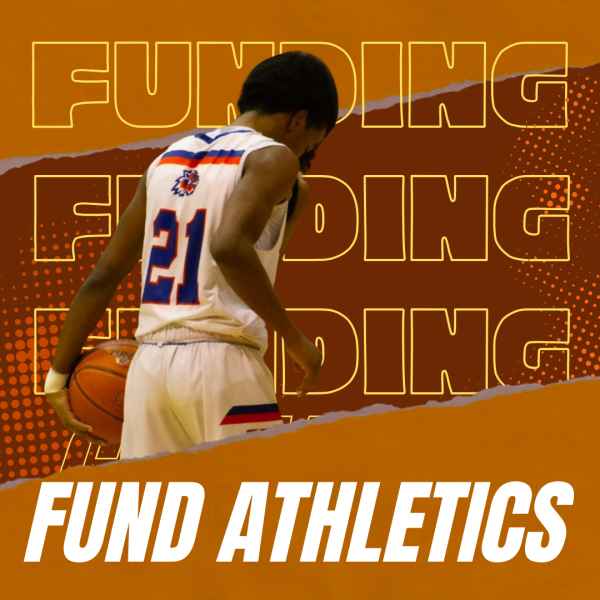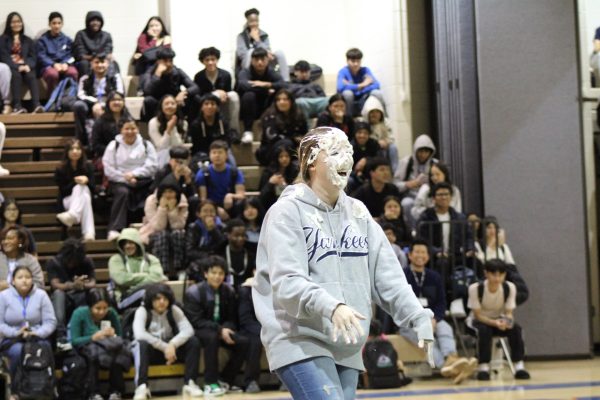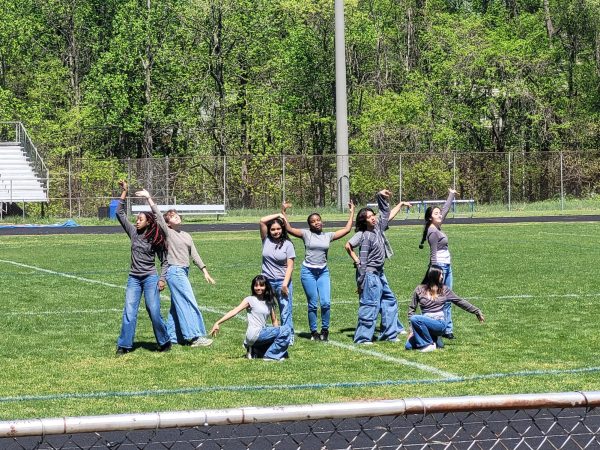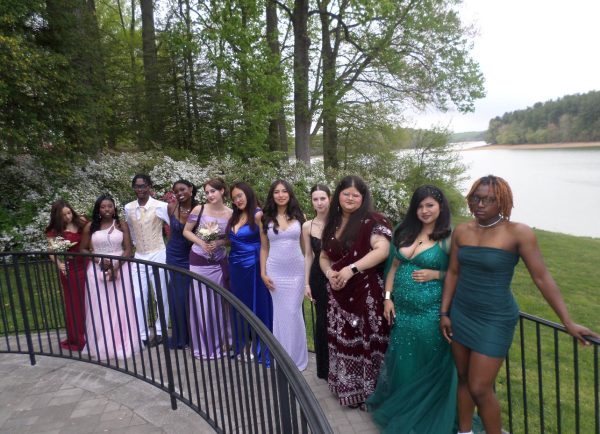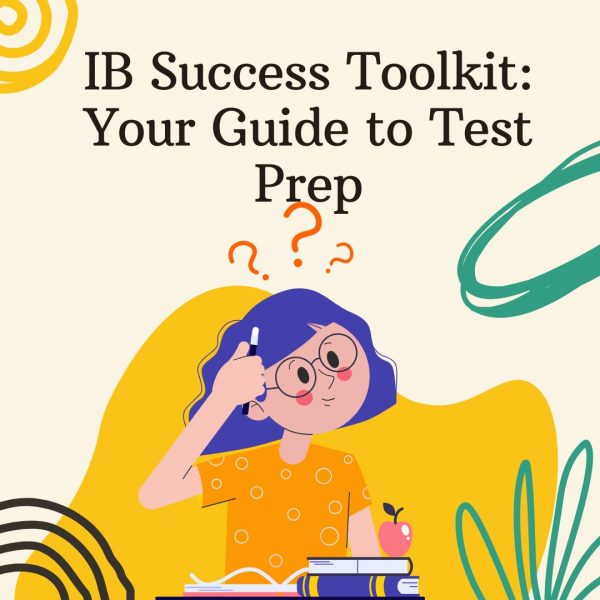MCPS takes steps to control spread of COVID-19 with protocols
COVID-19 protocols in schools take measures to prevent the spread of the virus and protect students.
Every school in Montgomery County Public Schools offers free rapid testing to students experiencing COVID-19 symptoms. This is to help mitigate the spread of the virus and lower the number of healthy students being sent home.
The specific symptoms associated knowingly with COVID-19 include cough, fever, sore throat, loss of taste or smell, vomiting, diarrhea, or sudden severe headache.
“We’ve never been through anything like this before. I’m in full compliance, and I really want everybody to pay attention [to the protocols],” principal Carol Goddard said. “It’s not just about you, it’s about the safety of others too.”
Symptomatic students should ask their teacher for a special pass to the health room, where they will receive a rapid test in the triage room. Rapid testing requires parental consent, which can be obtained verbally over the phone. Teachers should inform the health room ahead of time that they sent a student down to get tested.
Students who test positive for COVID-19 must quarantine for 10 days, have no fever for 24 hours without use of medication, and have improved symptoms before returning to school.
Students who test negative on the rapid are still sent home because they are sick, and when they are able to return to school depends on their vaccination status and if there is any known exposure to COVID-19.
“[If the rapid test came back negative and] there’s no known exposure…we always recommend [students] get a PCR test just to confirm,” school nurse Lisa Frost said. Polymerase chain reaction tests are available to members of the Wellness Center.
Those students can return to school when their symptoms improve and if they either have proof of a negative COVID-19 test or a doctor’s note explaining their diagnosis of a different illness.
However, if an unvaccinated student has a known exposure to someone with COVID-19, they are required to get a negative PCR test or a doctor’s note before returning. If the student chooses to not get tested, then they must quarantine for 10 days. Quarantine is not mandated for exposed, asymptomatic, vaccinated students, but they are responsible for monitoring themselves for symptoms.
Unvaccinated students identified as close contacts must be quarantined for 10 days, even if they are not confirmed to be positive for COVID-19, because they could develop symptoms over time. They may not return to school until after the 10 days, even if they get a negative PCR test. Vaccinated close contacts only have to monitor themselves to see if symptoms develop.
Close contacts are defined as anyone closer than six feet in proximity to someone who has tested COVID-19 positive, regardless of mask status, for at least 15 minutes in the past 48 hours.
“The rapid testing has reduced our contact tracing by 99%,” school business manager Julia Broyles said. “The rapid test became such a game changer.”
“[The old protocols were] causing a lot of loss of instruction,” Broyles added. “Finding all of those close contacts and tracing [them]…was a tremendous amount of time that was spent.”
Students living in the same household as a family member who is COVID-19 positive are considered close contacts and must follow the close contact guidelines depending on their vaccination status.
If possible, a student infected with COVID-19 is recommended to isolate within their home in a separate bedroom and bathroom to prevent the spread to other children. Any others living in the same household, including siblings, would be considered close contacts, and thus would begin their 10-day quarantine, if unvaccinated.
The 10-day quarantine resets for the close contacts if they become exposed again to the positive student, hence why “it’s so important to keep the student that is positive, separate from the rest of the family,” Frost added.
If a student is sent home because they are a close contact to another student—who tested positive at school—then the family of the close contact does not need to quarantine along.
“I see a lot of students are vaccinated in this school,” Frost said. “Knock on wood—we have not had one positive in our health room…I think [vaccinations are] a big reason [why].”
Your donation will support the student journalists of Watkins Mill High School. Your contribution will allow us to purchase equipment and cover our annual website hosting costs.

Ashley is an IB Diploma senior at Watkins Mill High School and Co-Editor-in-Chief for The Current, who adores books and calligraphy. She is President...



